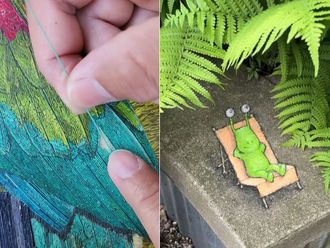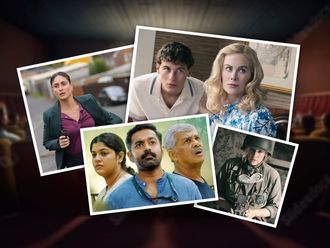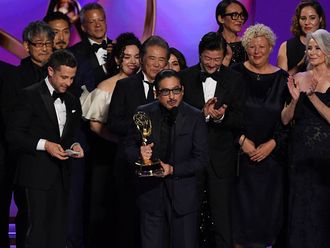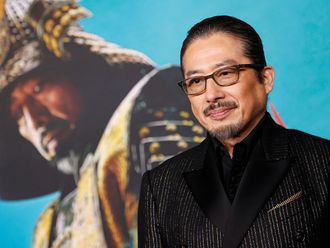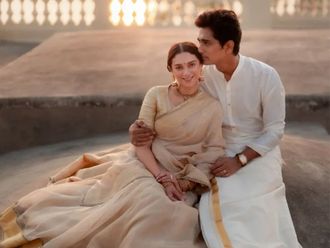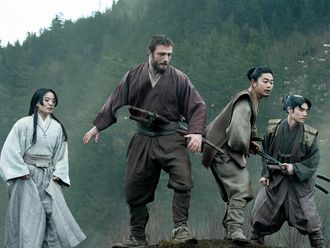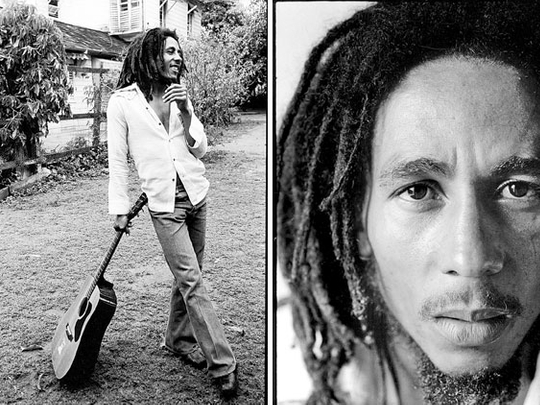
He is one of the best known photojournalists of our times. David Burnett, co-founder of New York-based photo agency Contact Press Images, was recently named among the "100 most important people in photography" by American Photo magazine. In the past four decades, Burnett has travelled around the world, documenting historic events such as the war in Vietnam, the Iranian revolution in 1979 and the fall of the Berlin Wall, for publications such as the Life magazine, Time and National Geographic. He has photographed every American president from Kennedy to Obama, and has covered every summer Olympics since 1984.
But the first exhibition of his works in the UAE is not about politics, war or sports. Titled Soul Rebel, it features photographs of legendary musician Bob Marley. Burnett first photographed Marley in 1976 at his home and studio in Kingston, Jamaica, for a Time magazine assignment on the reggae movement. The next year, he followed Marley on his Exodus tour of Europe for Rolling Stone magazine. Burnett's pictures present an intimate portrait of a charismatic star, capturing him in his various moods on and off the stage.
In 2009, Burnett compiled a book of his unpublished images of Marley and organised the first of many exhibitions of these iconic photographs. The exhibition in Dubai has been organised as part of Gulf Photo Plus 2012, a week-long photography event featuring workshops and seminars by 13 leading international photographers, including Burnett. We caught up with him at the opening of the exhibition and spoke to him about a lifetime of recording the history of our times.
Excerpts:
What was Marley like and what made you want to publish the book and put together this exhibition?
I knew almost nothing about him or reggae when I met him. But it was easy to work with him, because he was a simple, open and unpretentious person. I took the pictures while he spoke to the reporter about the meaning of his music and his desire for justice. For one picture, I made him run over ten times, but he patiently obliged. In Europe I travelled with the group and took pictures of them on stage and behind the scenes. We did not talk much, but he made me feel accepted, and understood and respected my work. The discovery that my daughter's friends love Marley and his music is what motivated me to do the book and the exhibition. And I have found that Marley is revered by people of all nationalities and ages. Even though he died more than three decades ago, they relate to him like a living presence.
You covered the revolution in Iran. What do you think of the way the Arab Spring has been covered, especially by citizen reporters?
Covering the Arab Spring seems to have been more perilous than anything I have ever done. Lots of lives have been lost and many of my friends have been killed. Thanks to modern technology, everybody can be a reporter now, but we still need professional journalists to present facts and analyses without personal agendas or biases. I am happy that people in this region have asserted themselves, but I am wary of the future, because it takes time for democratic institutions to be developed, and we have seen many revolutions being hijacked.
Your pictures have made a deep impact on people. How has witnessing those scenes and the pictures affected you?
I am a product of all the things I have seen. And the picture I take today is the sum of all the pictures I have taken before, with a bit of the present thrown in. So the older you get, the pictures tend to become more complex and full of history. There are a few things from Vietnam that I think about even now, but I do not have any nightmares. Some of the things I have lived through and witnessed were terrible, but overall I have been lucky to live that life and see as many interesting things as I have.
How do you feel about the fact that future generations are going to look at the history of our times through your eyes?
I think I have given them a pretty good start. Nobody can tell the whole story, but I hope I have provided a few good pictures that convey a feel of what the past 40 years have been like.
What attracts you to photographing sports?
Generally, in sports things happen so fast that you cannot really see it. But with a camera, you can stop the moment and see what is going on, which is very exciting. I find it fun to try and understand and calculate where I need to be to capture what is happening. Though, as always, luck plays a part. For instance, I caught that famous image of Mary Decker's pain, anger and frustration after she collided with Zola Budd and fell, because I decided to move away from the crowd of photographers at the finish line.
What's your top tip for photography enthusiasts?
Learn to operate your camera properly and be as comfortable with it as possible.
Soul Rebel will run at Gulf Photo Plus in Alserkal Avenue until April 15.




